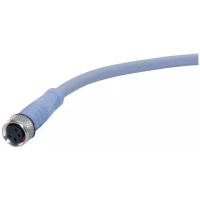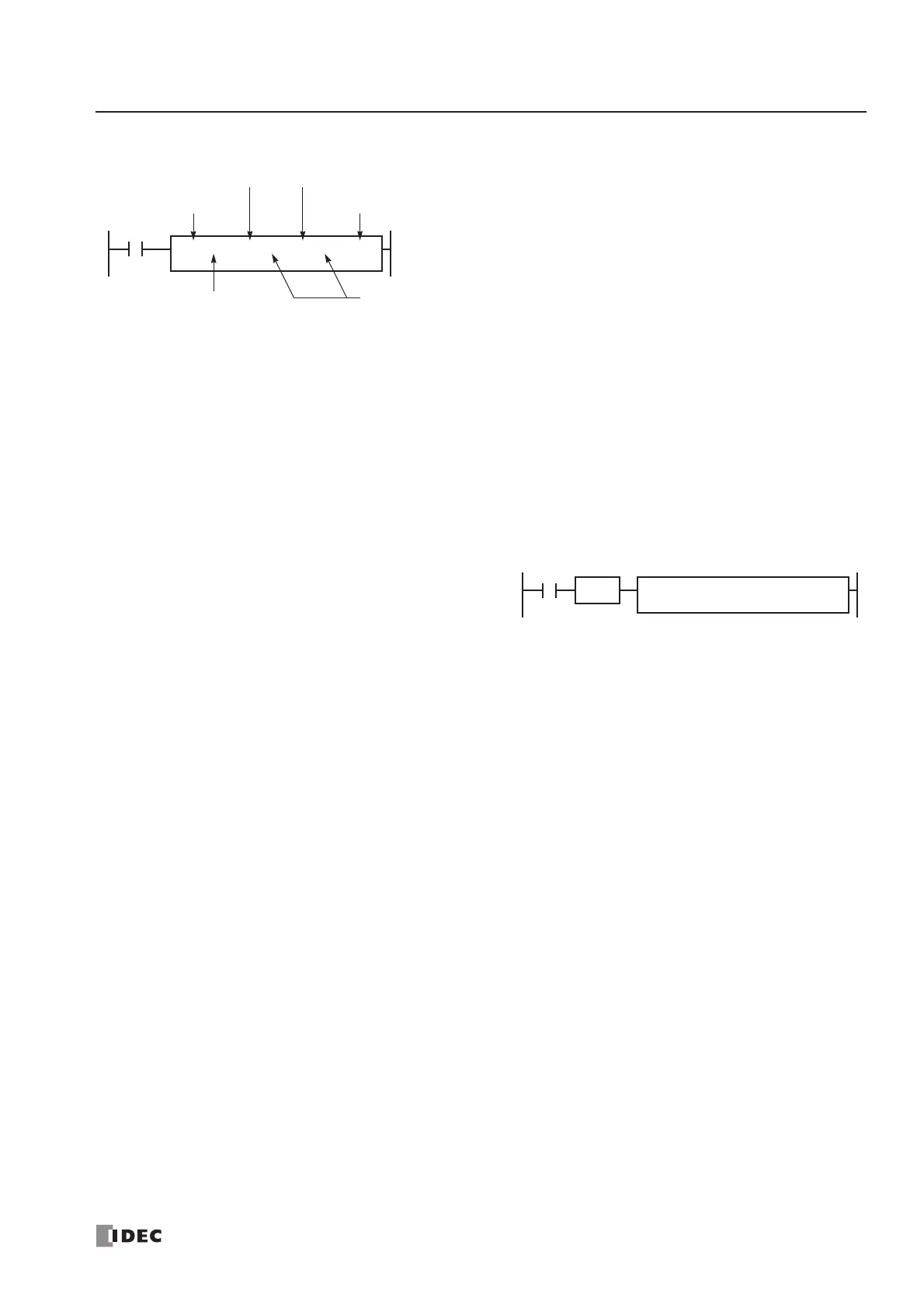8: ADVANCED INSTRUCTIONS
« FC4A MICROSMART USER’S MANUAL » 8-5
Structure of an Advanced Instruction
Input Condition for Advanced Instructions
Almost all advanced instructions must be preceded by a contact, except NOP (no operation), LABEL (label), LRET (label
return), and STPA (stop access) instructions. The input condition can be programmed using a bit operand such as input,
output, internal relay, or shift register. Timer and counter can also be used as an input condition to turn on the contact when
the timer times out or the counter counts out.
While the input condition is on, the advanced instruction is
executed in each scan. To execute the advanced instruction
only at the rising or falling edge of the input, use the SOTU
or SOTD instruction.
While the input condition is off, the advanced instruction is not executed and operand statuses are held.
Source and Destination Operands
The source and destination operands specify 16-bit data. When a bit operand such as input, output, internal relay, or shift
register is designated as a source or destination operand, 16 points starting with the designated number are processed as
source or destination data. When a word operand such as timer or counter is designated as a source operand, the current
value is read as source data. When a timer or counter is designated as a destination operand, the result of the advanced
instruction is set to the preset value for the timer or counter. When a data register is designated as a source or destination
operand, the data is read from or written to the designated data register.
Using Timer or Counter as Source Operand
Since all timer instructions—TML (1-sec timer), TIM (100-ms timer), TMH (10-ms timer), and TMS (1-ms timer)—
subtract from the preset value, the current value is decremented from the preset value and indicates the remaining time. As
described above, when a timer is designated as a source operand of an advanced instruction, the current value, or the
remaining time, of the timer is read as source data. Adding counters CNT start counting at 0, and the current value is incre-
mented up to the preset value. Reversible counters CDP and CUD start counting at the preset value and the current value is
incremented or decremented from the preset value. When any counter is designated as a source operand of an advanced
instruction, the current value is read as source data.
Using Timer or Counter as Destination Operand
As described above, when a timer or counter is designated as a destination operand of an advanced instruction, the result
of the advanced instruction is set to the preset value of the timer or counter. Timer and counter preset values can be 0
through 65535.
When a timer or counter preset value is designated using a data register, the timer or counter cannot be designated as a des-
tination of an advanced instruction. When executing such an advanced instruction, a user program execution error will
result. For details of user program execution error, see page 29-6.
Note: When a user program execution error occurs, the result is not set to the destination.
Specifies whether repeat is used for the operand or not.
Specifies the quantity of repeat cycles: 1 through 99.
require two source operands.
tions require two destination operands.

